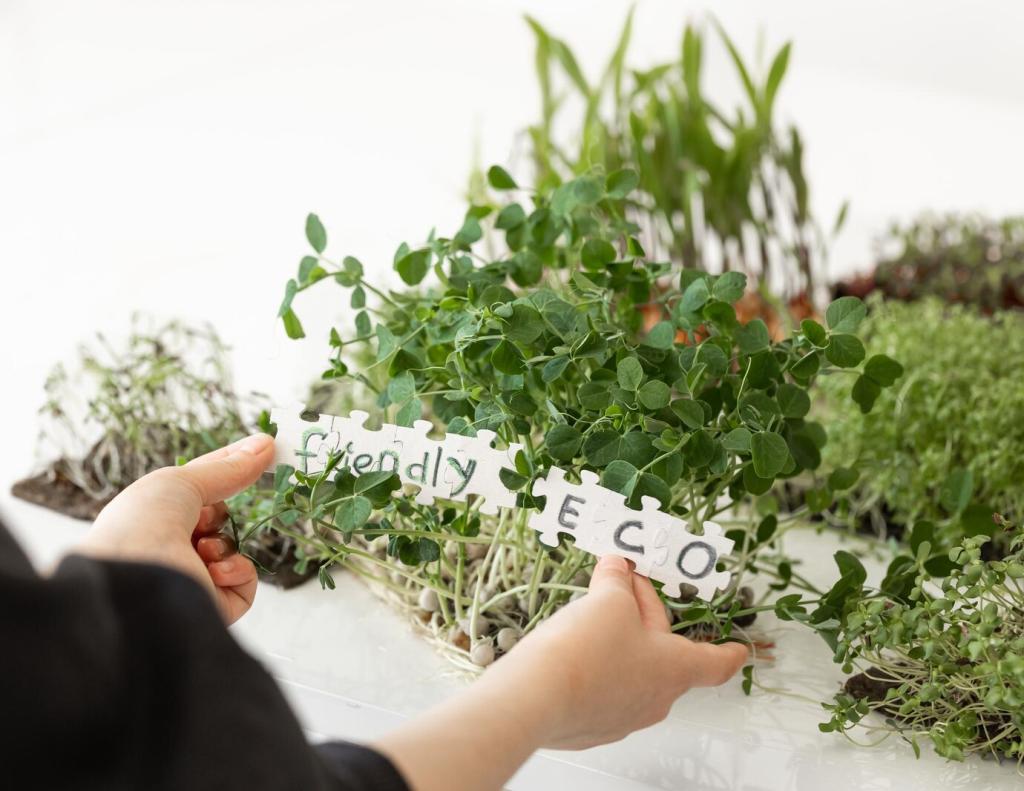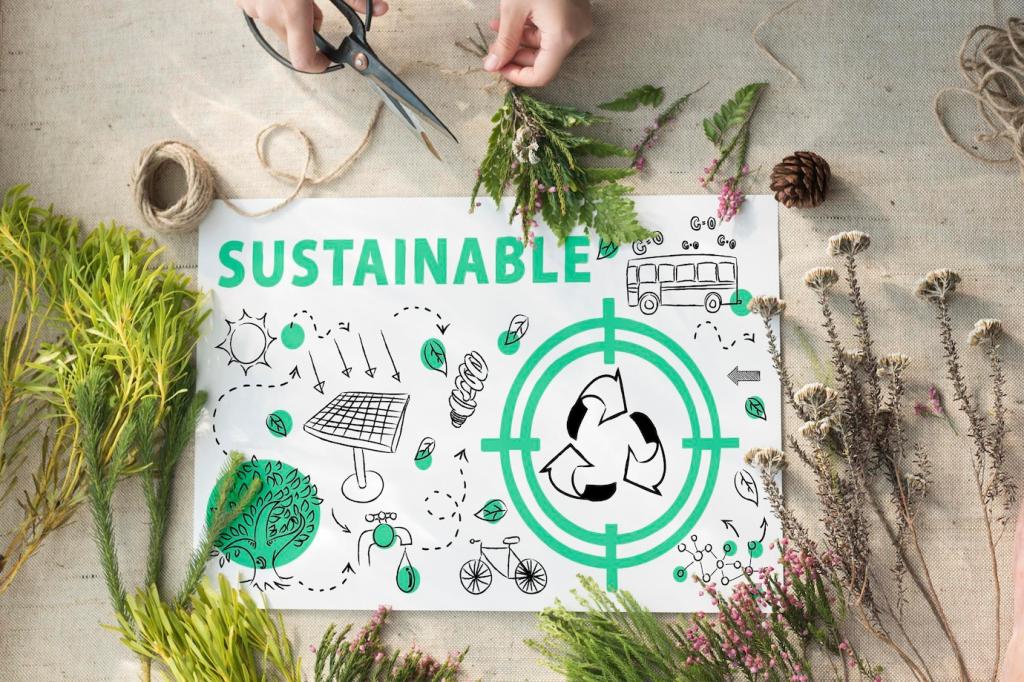Creative Sustainable Home Solutions
Discover inspiring ways to blend style, functionality, and eco-friendliness within your living space. Creative sustainable home solutions provide a pathway for modern households to minimize their carbon footprint while embracing innovation and comfort. By reimagining conventional approaches to architecture, energy usage, materials, and daily routines, homeowners can actively contribute to environmental preservation without sacrificing beauty or convenience. This page explores inventive ideas and proven methods for crafting living environments that prioritize both people and the planet.


Previous slide
Next slide
Energy-Efficient Systems and Appliances
Solar Power Integration
Installing solar panels or solar water heaters is a forward-thinking move towards self-sufficiency. By capturing sunlight and converting it into electricity or hot water, homes reduce reliance on fossil fuels and stabilize utility expenses. Solar technology has advanced to become more affordable and aesthetically pleasing, making it accessible to a broad range of homeowners. The investment pays off not only through lower bills but also through exceptional environmental benefits.
Smart Home Automation
Smart automation systems coordinate lighting, climate control, and appliances for optimal efficiency. Programmable thermostats and sensors ensure that energy is only used where and when it is truly needed. These intelligent systems can adapt to your daily habits, automatically turning off unnecessary devices and adjusting indoor climates. Homeowners enjoy more comfort and peace of mind while contributing to significant reductions in wasted energy.
High-Performance Insulation
Insulating walls, roofs, and floors with high-performance products minimizes heat loss and gain. Innovative insulations like plant-based foams, recycled denim, or aerogels create effective thermal barriers, maintaining comfortable temperatures year-round. This reduces the need for active heating and cooling, resulting in lower emissions and utility costs. The improved comfort levels and soundproofing are added bonuses that enhance overall quality of living.
Water Conservation Techniques
Rainwater harvesting involves collecting runoff from roofs and directing it into storage tanks for later use. This captured water can be applied to irrigation, flushing toilets, or even laundry, reducing demand on municipal supplies. Integrated filtration systems can make harvested water suitable for a broader range of purposes, creating a resilient household water source. The approach not only saves water but also mitigates stormwater runoff and erosion issues.
Installing low-flow toilets, showers, and faucets drastically reduces water usage without compromising performance. Modern fixtures are engineered with innovative aerators and valves that maintain pressure and comfort, ensuring user satisfaction. Over time, these upgrades produce substantial water savings and lower utility bills, making them a simple yet impactful sustainable choice. The broad adoption of efficient plumbing has the potential to conserve millions of gallons nationwide.
Greywater systems capture and treat wastewater from sinks, showers, and laundry for reuse in landscape irrigation or toilet flushing. By diverting greywater from the sewer system, households can reduce potable water consumption and minimize environmental pollution. Thoughtful design ensures the water is safely filtered and dispersed, supporting lush gardens and green spaces even in drought-prone areas. This closed-loop approach reflects a holistic commitment to sustainability.

Previous slide
Next slide

Outdoor Sustainable Living Spaces

Native Plant Landscaping
Using native plant species in landscaping supports local ecosystems, requiring less water, fertilizer, and maintenance than exotic alternatives. Native gardens attract pollinators, improve soil health, and resist local pests, creating vibrant outdoor oases that are both functional and beautiful. Embracing regional flora ensures that your landscape thrives with minimal intervention while providing critical habitat for wildlife.

Permeable Paving Solutions
Permeable paving materials such as gravel, permeable pavers, or reinforced grass allow water to filter through surfaces, replenishing groundwater and preventing runoff. These innovative alternatives to traditional concrete or asphalt reduce heat buildup and mitigate flooding risks. Incorporating permeable surfaces into driveways, walkways, or patios adds both function and sustainability to your outdoor design, contributing to healthier urban hydrology.

Outdoor Living Structures from Sustainable Materials
Outdoor decks, pergolas, and sheds can be constructed using sustainably sourced or recycled materials like bamboo, FSC-certified wood, or reclaimed steel. These choices align outdoor living with environmental principles, providing durable and appealing spaces for relaxation or gatherings. Sustainable materials ensure minimal ecological disruption, and their resilience stands up to the elements, reducing the need for frequent replacement.
Healthy Home Environments
Managing indoor air quality is essential for health and comfort. Installing air-purification systems, using ventilation strategies, and selecting non-toxic materials all work together to reduce allergens, pollutants, and mold. Plants can also enhance air purity naturally, contributing to a fresher, more enjoyable living environment. Attention to air quality ensures that sustainable homes are healthy places in which to live and grow.
Composting food scraps and yard waste transforms would-be garbage into nutrient-rich soil, closing the food loop locally. Home composting setups can be tailored to urban environments, with indoor bins, worm bins, or outdoor piles fitting various space needs. The resulting compost benefits gardens and landscaping, reducing reliance on chemical fertilizers and supporting organic growth. Regular composting habits nurture sustainability at the household level.
Waste Reduction and Recycling at Home
High-Efficiency Windows and Doors
Upgrading windows and doors to high-efficiency models containing multiple panes, insulating gases, and tight seals significantly reduces energy loss. These improvements result in lower heating and cooling costs while enhancing indoor comfort levels year-round. Over time, the energy savings often recoup the upfront investment, making this a practical and planet-friendly option for homeowners seeking long-term returns.
Energy Monitoring and Management Systems
Installing energy monitoring systems provides real-time feedback on household consumption, empowering residents to identify trends and opportunities for further improvement. Management tools can automate or recommend energy-saving adjustments, ensuring that sustainable intentions translate into measurable action. With transparent data and actionable insights, homeowners gain control over their resource use and can track their progress toward greater efficiency.
Renewable Energy Incentive Programs
Exploring local, state, or federal incentives for renewable energy installations can make going green more accessible and affordable. Rebates, tax credits, and grants offset the cost of solar systems, geothermal heat pumps, or wind turbines, boosting returns and speeding up payback periods. Being informed about available programs unlocks greater potential for households to invest in renewable solutions that are both financially and environmentally advantageous.
